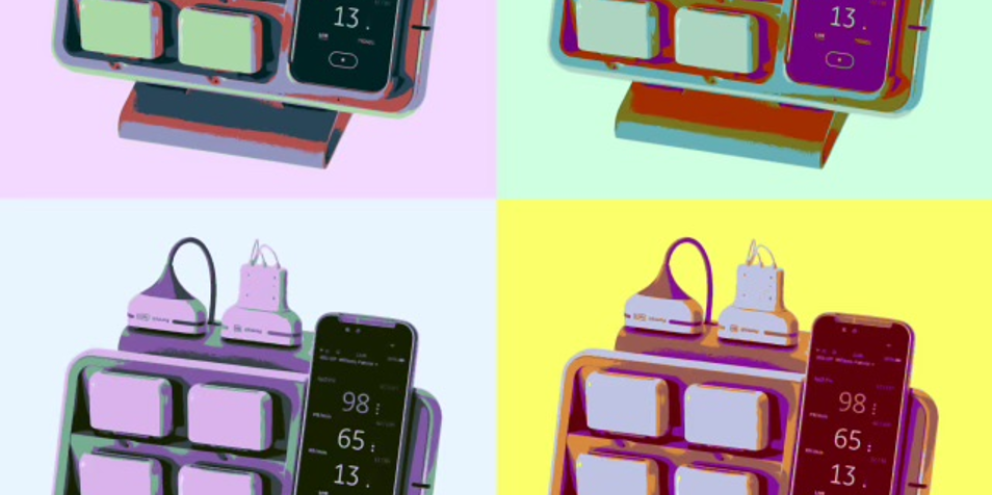
Shortly after Warhol's death, the New York State Health Department accused New York Hospital—now New York-Presbyterian Hospital—of providing the artist with inadequate care, including repeated failure to note his chart accurately. The health department also claimed Warhol was improperly monitored by medical and nursing staff.
The healthcare landscape has changed significantly since Warhol's death. Advancements in technology can improve patient outcomes, but the importance of monitoring cannot be understated. Each year 4.2 million people around the world die within 30 days of surgery and postoperative deaths account for 7.7 % of all deaths.2 A patient's status can change quickly even during routine procedures, as evidenced by Warhol's case, and clinicians need to be able to act quickly to prevent deterioration or death.
A not so routine procedure
"Andy Warhol dies after routine surgery" read news headlines reporting about the artist's death. This refrain was constant, but inaccurate. Warhol was in poor health for at least a month prior to the operation. He had also been shot nearly 20 years earlier and never fully recovered. Warhol became fearful of hospitals after this incident and did not seek proper medical care in subsequent years. He also had symptoms of gallbladder disease for at least 15 years prior to the procedure. At the time of his surgery, his gallbladder was gangrenous and "fell to pieces" as it was being removed.3 In short, Warhol had a complex medical history that made what should have been a routine procedure incredibly risky. One medical historian reported that the procedure to remove Warhol's gallbladder was "major, major surgery in a very sick person."
Warhol's private nurse checked on him at 4 a.m. on February 22, and he seemed medically fine. Less than two hours later, however, the nurse found him unresponsive, and healthcare staff were unable to resuscitate him. The official cause of death was listed as ventricular fibrillation.
According to the American Heart Association, ventricular fibrillation can have several causes, including cardiomyopathy, damage to the heart muscle, drug toxicity, insufficient blood flow to the heart muscle, and sepsis.4 However, there is no record of Warhol having those symptoms. Later, it was announced that he died of a heart attack secondary to the stress of the operation and fluid overload.
The New York State Health Department could not definitively state that the quality of care Warhol received contributed to his death. The department found no fault with the surgery, but rather in how Warhol was treated during admission and post-op. The hospital did not obtain Warhol's medical records from when his gallbladder disease symptoms first arose in 1973, nor did they perform a complete medical history or physical examination. It was also noted that Warhol had no drug allergies when he was allergic to penicillin.
Would Andy Warhol still be alive if he had received proper monitoring?
The truth is that we will likely never really know if Andy Warhol could still be alive with the use of proper monitoring. However, continuous monitoring would probably have given him a far better chance of survival, given that the medical staff would have identified his deteriorating condition earlier.
Initially, Warhol's surgery was successful. He watched TV and made phone calls. But his condition deteriorated rapidly, and he died suddenly in his sleep. Warhol's medical history should have made him a high-risk patient who necessitated frequent monitoring. His private nurse also failed to record his vital signs and medication administration.
Steven Hayes, the lawyer who represented Warhol's estate in their case against New York Hospital, alleged that nurses also failed to monitor the artist's fluid intake and output. His lungs filled with fluid, which caused his heart to stop. No one checked on his condition as it continued to worsen.
How has healthcare changed since Warhol's death?
Any major surgery carries a significant risk of serious adverse events (SAEs).5 With continuous monitoring, medical staff can detect changes in a patient's vitals that can indicate deterioration. The first pulse oximeter was commercialized in 1980, and by the time Warhol died in 1987, the standard of care for the administration of a general anesthetic included pulse oximetry. A cholecystectomy like Warhol had undergone would have been performed under general anesthesia.
A large study conducted in the United Kingdom showed that death rates were 1000 times higher in the postoperative period than during surgery itself.6 This could in part be due to the shift to spot check monitoring when patients leave the PACU, which essentially leaves a patient unmonitored and may delay the ability to detect changes in a patient's condition. Staff may conduct spot checks once every four to six hours, or even just once every eight to 12 hours. One study of medical-surgical ward patients found that those who experienced cardiac arrest had significantly different vitals from other patients in the 48 hours prior.7 With earlier intervention, those patients may have experienced different outcomes. Vital signs can become abnormal in the hours before cardiac arrest and spot checking does increase the odds of abnormal vitals being caught, however monitoring continuously can drastically improve these odds even further.
Leaving patients unmonitored for long stretches of time increases the risk of SAEs. However, new technology, like Portrait Mobile from GE HealthCare, enables wireless continuous monitoring, which can help improve patient safety. One survey found that 90% of anesthesiologists felt automatic or continuous vital sign monitoring should be available on surgical wards.8 Anesthesiologists also felt that continuous health monitoring has the potential to detect clinical deterioration early and decrease in-hospital mortality.
Wearable devices allow clinicians to access a consistent stream of patient data. Combining continuous monitoring with parameter alerts can improve patient outcomes. However, wearable continuous patient monitors not only need to be user-friendly, but designed for patient safety and comfort as well. The risk of noncompliance increases if the device is uncomfortable or bothersome to wear. Furthermore, these devices also need to be trusted by the nursing staff and should not be a source for alarm fatigue.
Early detection of patient deterioration improves outcomes
Using digital technology and wireless sensors to monitor patients allows clinicians to detect signs of deterioration early so they can intervene. Additionally, patients feel more secure with wireless monitoring devices. These devices reassure them that their care team is focused on their well-being. If today's technology had been available in 1987, clinicians may have realized that Andy Warhol was deteriorating. While there is no way to know how long Warhol would have lived after his surgery, it is possible that a continuous monitoring technology could have enabled clinical intervention at the first sign of deterioration, potentially saving his life.
Resources:
1. Farber, M.A. Warhol received inadequate care in hospital, health board asserts. The New York Times. (1987) https://www.nytimes.com/1987/04/11/nyregion/warhol-received-inadequate-care-in-hospital-health-board-asserts.html.
2. Tekalign, T., Balta, H., & Kelbiso, L. Magnitude of post-operative mortality and associated factors among patients who underwent surgery in Wolaita Sodo teaching and referral hospital, SNNPR region, Ethiopia. African health sciences, 21(4), 1842–1848. (2021). https://doi.org/10.4314/ahs.v21i4.42
3. Gopnik, Blake. Andy Warhol's Death: Not So Simple, After All. The New York Times. (2017). https://www.nytimes.com/2017/02/21/arts/design/andy-warhols-death-not-so-routine-after-all.html.
4. Ventricular Fibrillation. American Heart Association. (2023). https://www.heart.org/en/health-topics/arrhythmia/about-arrhythmia/ventricular-fibrillation.
5. Haahr-Raunkjaer, C, Mølgaard, J, Elvekjaer, M, et al. Continuous monitoring of vital sign abnormalities; association to clinical complications in 500 postoperative patients. Acta Anaesthesiol Scand. 2022; 66: 552–562. doi:10.1111/aas.14048
6. Pearse, Rupert M, Rui P Moreno, Peter Bauer, et al. "Mortality after Surgery in Europe: A 7 Day Cohort Study." The Lancet 380, no. 9847 (2012): 1059–65. https://doi.org/10.1016/s0140-6736(12)61148-9.
7. Churpek, Matthew M., Trevor C. Yuen, Michael T. Huber, et al. Predicting Cardiac Arrest on the Wards. Chest 141, no. 5 (2012): 1170–76. https://doi.org/10.1378/chest.11-1301.
8. Michard, Frederic, Robert H. Thiele, Bernd Saugel, et al. "Wireless Wearables for Postoperative Surveillance on Surgical Wards: A Survey of 1158 Anaesthesiologists in Western Europe and the USA." BJA Open 1 (2022): 100002. https://doi.org/10.1016/j.bjao.2022.100002.








